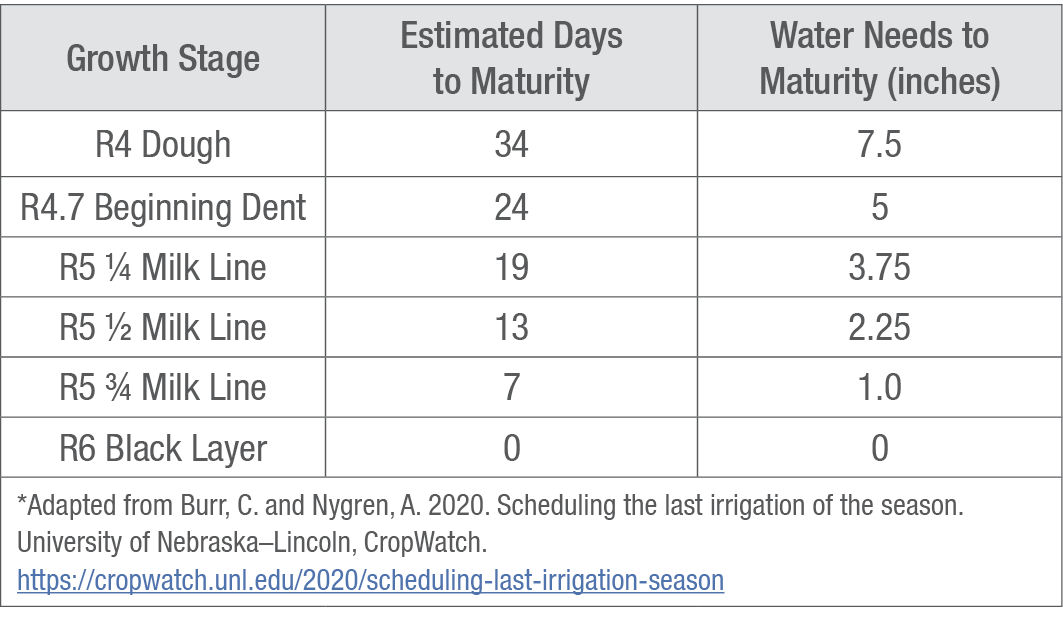When to Schedule the Last Irrigation for Corn
July 8, 2024
Correctly scheduling the last irrigation can increase returns by reducing pumping costs and improving harvest conditions. In some cases, where irrigation is allocated, carefully scheduling irrigation may preserve some water for the next growing season.
The amount of water a corn crop needs to reach physiological maturity is well understood under normal growing conditions, so it’s possible to get a good estimate of the amount of water required for a given crop (Table 1). There may be enough water stored in some situations to finish a crop, while in others one or more irrigations may be necessary. Consider the following factors when deciding whether or not a final irrigation is necessary:
Table 1. Crop water needs for the remainder of the growing season.*

- At the end of the growing season, maintain the soil water depletion level at 60% instead of the 50% recommended in the middle of the season, as the rate of water use per day is much lower.1
- The water holding capacity of different soils varies depending on soil texture and should be taken into account. For example, silt loam has a water holding capacity of 2.2 inches of water per foot of soil, but a loamy sand can hold only 1.1 inches of water per foot of soil. At 60% depletion, the silt loam would have 5.3 inches of usable water in the top four feet if the soil was at field capacity, so at R4.7 no additional water would be needed. However, at 60% depletion the loamy sand would only have 2.64 inches of water available in the top four feet starting at field capacity so an additional irrigation may be necessary after R4.7 (Tables 1 and 2).1
- Keep in mind the average amount of rain that may occur and consider it when determining the need for irrigation.
- The objective is to provide just enough water to reach the full yield potential while leaving the field as dry as possible. Doing this provides the maximum amount of soil moisture storage capacity for precipitation that may occur prior to next year’s crop. Maintaining the field as dry as possible may also help mitigate harvest delays from a subsequent wet fall that could saturate the soil.1
Table 2. Total available water in the top 4 feet of the soil profile if the soil is at field capacity.*

Sources
1Burr, C. and Nygren, A. 2020. Scheduling the last irrigation of the season. University of Nebraska–Lincoln, CropWatch. https://cropwatch.unl.edu/2020/scheduling-last-irrigation-season
1221_425601